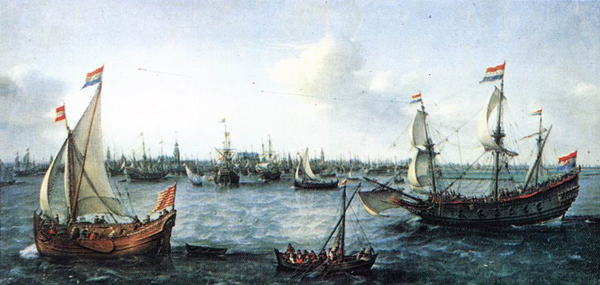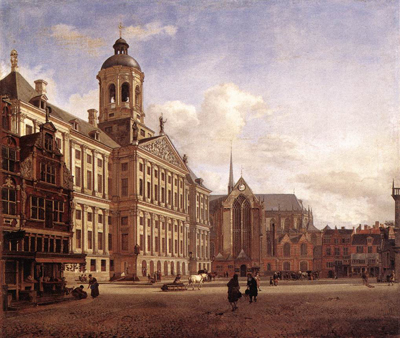Amsterdam is the capital and largest city of the Netherlands, located in the province of North Holland in the west of the country.
The 17th century is considered Amsterdam's Golden Age, during which it became the wealthiest city in the world. Ships sailed from Amsterdam to the Baltic Sea, North America, and Africa, as well as present-day Indonesia, India, Sri Lanka, and Brazil, forming the basis of a worldwide trading network. Amsterdam's merchants had the largest share in both the VOC (Dutch East India Company) and the WIC (Dutch West India Company). These companies acquired overseas possessions that later became Dutch colonies. Amsterdam was Europe's most important point for the shipment of goods and was the leading financial center of the world. In 1602, the Amsterdam office of the VOC became the world's first stock exchange by trading in its own shares.
The home of Tulip Mania, and countless exceptional painters, writers, musicians, printers, and artists, it was the envy of the world in terms of its wealth, power, and diversity. But there was a dark side to this period, as the involvement in the slave trade, and trading in commodities requiring slave labor, was a major driver in the upsurge in wealth there. Additionally wars and natural disasters created a situation where so many orphans without any homes were put on ships bound for the colonies to establish new settlements.
See this link for a picture of the West India House in Amsterdam. Headquarters of the Dutch West India Company from 1623-1647.
http://en.wikipedia.org/wiki/File:West-Indisch_Huis.jpg
And here for a view into a winter market day in 1640:



https://upload.wikimedia.org/wikipedia/commons/1/1f/J.A._Beerstraaten_The_Paalhuis_and_the_Nieuwe_Brug.jpg

